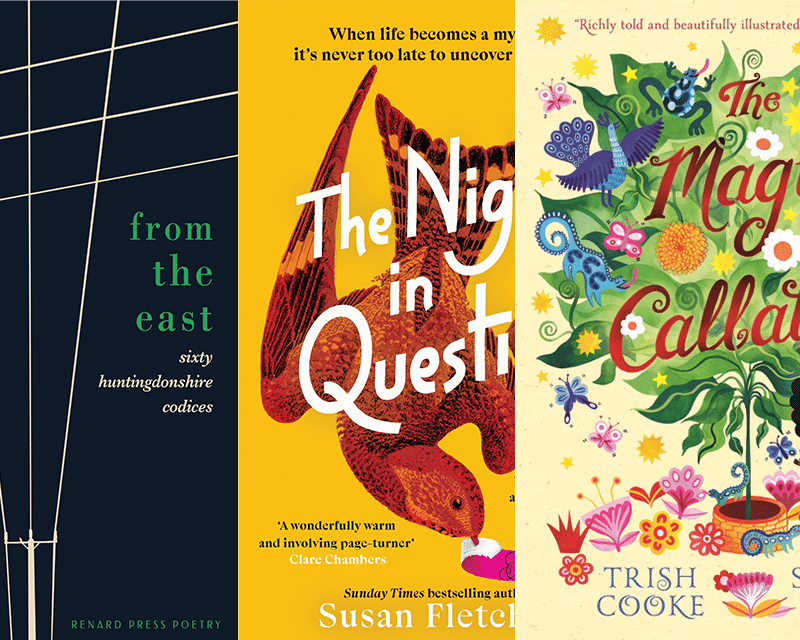- Collected
- Article
Lambing
Dermot Healy, always pushing the life-death question to the very edge

- 20 July, 2015
- Frances Byrnes
Iwas in Sligo in March 2006 to record a BBC Radio 3 programme with the writer Dermot Healy, about his life on the edge of the sea. The Atlantic was eating at his house; you could hear it boom under the floorboards. He seemed to thrive on peril, living right on the cusp, generating dangers he needn’t have.
In February, I’d asked him to keep an audio diary during the full moon and the full sea that came with it. I was there to fetch those minidiscs and record interviews. Mark, my husband, was with me. He’d introduced me to Dermot a couple of years earlier: they were old friends. We’d always stayed before with Dermot and his wife, Helen, in their house, heard spray batter the corrugated roof, golluped down his salty lettuces. This time, we booked into a Bed and Breakfast nearby, so Dermot could be off-mic for a while each day. It’s hard to turn the mic off when making features.
We arrived in Ballyconnell to find him filling industrial-sized gabions with stones from the shore to make ramparts; hard work for a thin, white-haired man. The Atlantic was glassy in the perishing cold. It took three goes to start his car, the engine ruined by salt, but soon we were off. Off to record others who knew what the sea could do. Down at Jonny and Beesey’s, both in their nineties, Jonny was rebuilding a garden wall the Atlantic had destroyed in an old storm. ‘Why did you leave it till now?’ asked Dermot. ‘I didn’t know I’d still be here’, replied Jonny.
The elderly couple were tough. They used to cycle up Ben Bulben for turf for their fire. Dermot said he’d show us and so we drove along the base of the entrancing, wave-shaped mountain, then upwards. We inched through sheep and up to the end of the track. Once wired up, windshield on, I asked Dermot to describe the big view of the peninsula below. That’s when we heard the desperate bleat.
Mark found it: a lamb struggled out from a cleft down by the river, hardly able to pull himself up on his spindly legs; ‘leave him, leave him’, said the men. The lamb tottered straight over to the car to lean on the warm engine. The bleat got right inside me. Dermot and Mark found the mother. They wouldn’t let me look; she was swollen and the crows had taken her eyes. The lamb was shivering, the umbilical chord still wet and red… ‘Let nature take its course’, I said, ‘We’re nature too, we can help.’
Dermot seemed nervous of farmers: the sheep was another man’s property, but which man? The lamb was newborn. He or she wasn’t marked. ‘Put it in the car’, Dermot suddenly said, without explanation.
Then we slowly, me in the back, the men in the front, moved down the hill towards the crowds of sheep. Mark had the lamb. I was all wired with headphones and mic leads. Dermot stopped, ‘Put it out here.’ It was as if he had a fight going on inside himself, warding off emotions. He willed the animals to look after their own. I knew it wouldn’t work: the herd practically trampled the newborn. Mark lifted it back into the car. The lamb’s eyes looked mascara-smudged. Mark felt its tiny heartbeat against his hand. And Dermot drove on (my diary says ‘SO, SO slowly’). He seemed fiercely reluctant taking on the lamb. In the back seat, I thought I would burst at his slow motion. What was he doing? The lamb flopped down.
‘I can’t get John McGahern out of my mind’, I said. I knew John was dying, a county away, in Co. Leitrim; I’d known him and his wife Madeline over a decade. In his final novel, That They May Face the Rising Sun, John refers to a lamb that was lost on the smallholding of the central character. It’s a tiny, heartrending moment that seems to allude fleetingly to some other life that was lost or could never be born at all. Now we were inching along with a real lamb dying.
A man in a tractor: Dermot’s snail’s pace stopped. ‘If you found an abandoned lamb newborn on the mountain and brought it down in your car, what’d you do?’ Dermot asked him. The bemused tractor driver peered in. If it was less than four hours old, he said, you might save it: ‘You have to get to the Co-op by 5pm and get Beestings.’ It was nearly 5pm. And Dermot just trundled. Mark chided, ‘It’s very weak. It might not make it.’
We got to the farmers’ Co-op, just, and the men got Beestings — just a powder! A powder, and none of the hot water we needed to make it! Why didn’t someone put on a kettle? Four hours from its birth might be now, might just be gone.
‘There, that was its last baa’, warned Mark. The lamb now was nodding away. I could have killed Dermot for his slow drive. We drove on and on, achingly. Until, ah, a Texaco, finally — finally. Mark gave Dermot the bottle that had come with the Beestings and told him to get warm water in it. Back out with it, Dermot sounded as if he could now hear the story in what was happening. He’d regaled the woman on the till, he told us: she’d suggested he try the hot drinks machine. Just press for hot water. It was as though he thought I was still recording but, at some point, uncharacteristically, I had stopped.
‘He might not take it’, Mark prepared me, as he finally got the bottle into the lamb’s little tongue-coloured mouth. There was a struggle, then it took a bit, then a bit more, before it finally settled into it, glugging. I hid my streaming eyes from Dermot’s rear view mirror. The lamb’s fine little heart and his trust rewarded, for now. Dermot took charge. He’d done it. He’d keep the lamb the night, see if he made it; feed him in the early hours. At the house, Helen made up a hot water bottle. She found a cardboard box and the lamb jumped out of it.
Back at our B & B, Ardtarmon, we enquired would they take the lamb if it lived? They had cattle, two pigs and a puppy: they might. I listened, then, to Dermot’s audio diary. Dermot seeing elephants in the waves at high tide; Dermot saying how he bought the house in the dark, which is how he didn’t know where it was. I sat up sharp suddenly: Dermot recording himself at the edge of the full moon sea, on the rocky ledge behind his house: ‘Up-yer-boy-yer!’ he’s calling out to the waves as they bang up at him: ‘Up-yer-boy-yer!’ Boom, it reverberates. Thud bashes the dark incorrigible water. He’s over-modding on the mic; the sound distorts as he calls at the edge.
Mark and I don’t know what Dermot’s reluctance and slow, slow action with the lamb was about: a wish not to have altered the course of ‘nature’? Shock? Or was he (as Mark thinks) steadily pushing the life-death question to its very cusp, like living on the shoreline, to eke everything possible out of the perilous adventure?
The next day, the lamb was all. He trotted out for walks behind Dermot and leaned on him. Dermot acted bashful. ‘Yes, we’d like the lamb!’ Christa (at Ardtarmon) laughed. Not quite true. Her husband, the farmer, Charles, said that he’d rather not have a mountain lamb, they can’t be fenced, they jump, they’re hardy. When he looked at it he saw mint sauce. But life prevailed. I returned to England.
Two weeks later John McGahern died. Dermot’s real lamb and John’s lamb of the imagination… as though one life had made room for the other. Dermot’s lamb survived, reared in Ardtarmon’s kitchen, by the stove, with their young dog, till it thought it was a dog, though it turned out to be a ram! And they called the young ram ‘Dermot’, after Dermot Healy. Eventually, Christa and her children met with Dermot and, with some ritual and feeling, they took the lamb, now grown, back to the mountain: to Ben Bulben — under which W.B. Yeats is buried in one churchyard and now, in another, Dermot Healy is too. His heart gave out a year ago, in the summer of 2014.
The Edge was broadcast in 2006 but my BBC editing software had made some mishmash of my recordings. So I can’t listen back to find out when, on the day of the lamb, I turned the mic off. I remember hearing the first kitten-like bleats through my headphones. But it swiftly got too personal. I couldn’t record something dying.
Did Dermot make art out of the lamb? He wrote poems conjuring up the creatures of Ballyconnell: did he write about a lamb? We don’t think so. His last novel, Long Time No See (like McGahern’s last, a gathering of loved ones in a place he loved) has no especial lamb in it. At his funeral, no other friends knew the story.
Some of us make things – books, programmes, paintings – to stay alive, literally. It’s a kind of superstition. And perhaps when we’re saving a life, we don’t need to make art? So perhaps it wasn’t important to keep the lamb alive – on tape, in words – because we’d given him life in life?
I would love to ask Dermot about it all, but we didn’t know he’d not be here. He’d so often before seen an edge and gone right up to it, to win life back from nearly losing it, that we forgot he might be swept out to sea.
You might also like:
No facts, only versions
Memoirs are as much about what is excluded as what is included. This edition examines how you can evoke the…
RLF Fellows’ News: April 2024
Publishing News RLF Fellow Trish Cooke’s new children’s book, The Magic Callaloo, is set to be published by Walker Books…
Susan Fletcher on outsiders in fiction – literal and imagined
I’ve always known that I’ve preferred to be outside. To be an outsider – literally, and, specifically, amongst wild places…


